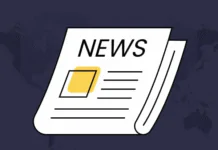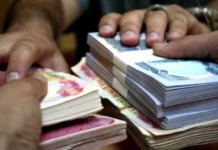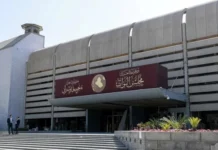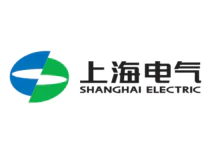Good Morning ,
Day One of a U.S. Government Shutdown — What It Signals for Global Power and Finance
As federal operations grind to a halt, the shockwaves go beyond Washington — this moment may accelerate how capitals, markets, and alliances recalibrate.
*****************************************
What We Know: Shutdown Begins Amid Deep Political Divide
- On October 1, 2025, the U.S. government entered a shutdown after Republicans and Democrats failed to reach agreement on a $1.7 trillion funding package, with healthcare subsidies among the core conflicts.
- The shutdown is the 15th since 1981, but this one carries added weight: President Trump is pushing aggressive restructuring of the federal workforce and government programs.
- Immediate effects include:
▪️ Federal employees furloughed without pay, while some on administrative leave had already been paid through the end of September.
▪️ Military personnel, research programs, air travel, and social services disrupted or delayed.
▪️ Analysts estimate a $400 million per day cost, spotlighting the economic stakes.
Political Context & Risks
- The impasse reflects intense polarization: Republicans frame the shutdown as leverage to force concessions, especially over government size; Democrats call the tactic reckless.
- Public opinion is fractured — the political gamble is that no one wants to “lose” by appearing weak.
- Longer shutdowns risk eroding confidence: businesses, foreign governments, and markets may begin to question U.S. reliability as a stable economic anchor.
How This Connects to Global Restructuring
🔹 Institutional Fragility & Credibility
When the U.S.—long seen as a bastion of institutional continuity—allows a shutdown to paralyze parts of government, it weakens perceptions of its capacity to govern. That perception shift can shift financial flows, risk assessments, and alliances.
🔹 Capital Flight & Market Volatility
Uncertainty spurs capital movements. Investors may retreat from U.S. treasuries or dollar exposures, pushing them toward alternative safe havens, gold, or non-dollar debt instruments.
🔹 Power Vacuums & Alternative Financial Systems
A distracted U.S. may signal opportunity to China, BRICS, and others to deepen parallel institutions, trade blocs, and currency alternatives while U.S. domestic focus is on internal strife.
🔹 Debt & Fiscal Stress Amplified
Already burdened by a $37.5 trillion national debt, a shutdown reduces revenue, increases borrowing costs, and tightens the margin for maneuver. Other nations watching may accelerate their own strategic alternatives.
*********************************************
Key Takeaway
Day one of the U.S. shutdown is more than a domestic political crisis — it’s a structural stress test of America’s global role. As institutions slow, markets tremble, and credibility cracks, the architecture of global finance and power tilts ever more toward a multipolar future.
This is not just politics — it’s global finance restructuring before our eyes.
@ Newshounds News™ Exclusive
Sources:
- Modern Diplomacy – U.S. Government Shutdown Begins Amid Deep Political Divide Modern Diplomacy
- (Contextual references from institutional debt trends, global risk assessment, and comparative reaction patterns)
~~~~~~~~~
Russia’s Nuclear Technology Playbook for the Global South
By providing reactors, training, and financing, Russia is positioning itself as an energy patron — a role with geopolitical weight and financial leverage in the multipolar era.
Russia’s Strategy in the Global South
- Russia is promoting its nuclear technology as a tool for long-term development and energy security, presented as low-carbon, stable power for growing economies.
- At the Global Atomic Forum (part of World Atomic Week), President Putin emphasized shifting public attitudes toward nuclear energy and the expanding view of nuclear power as a developmental necessity rather than a niche or controversial option.
- Russia’s pitch is holistic: not just building reactors, but offering complete packages—fuel supply, waste management, staff training, financing, and local industry development.
- Russia recently formalized a planning agreement with Ethiopia to build a nuclear plant, including roadmap development and technical capacity building.
Challenges and Resistance
🔹 Technical, safety & regulatory hurdles
- New nuclear projects require rigorous oversight, often needing alignment with the International Atomic Energy Agency (IAEA) standards. Some partner countries lack regulatory infrastructure.
- Public skepticism and concerns about cost overruns, radioactive waste, and nuclear accidents remain major political obstacles.
****************************************
🔹 Competition & donor dependence
- Several global and regional actors—China, France, the U.S.—compete for influence through conventional energy projects (renewables, gas), which may appear safer or more politically acceptable.
- Countries relying on Russian nuclear assistance may become dependent on Russian supply chains, maintenance, and economic terms, giving Moscow leverage in diplomacy, trade, or sanctions evasion.
Restructuring Implications & Strategic Alignments
🔹 New Patronage Network
Russia is re-weaving relationships in the Global South by positioning itself as a strategic energy backer. These infrastructure ties often translate into political loyalty and alignment in voting blocs, trade agreements, and financial pacts.
🔹 Financing & Currency Anchors
Nuclear projects cost tens of billions. The financing machinery—loans, guarantees, supply chains—can be aligned with non-USD systems or tied to regional banking structures (e.g. BRICS or state development banks). This shifts capital flows and undermines dollar dominance.
🔹 Legitimacy Through Development
Russia frames its approach as cooperation, not domination. By helping energy-poor states industrialize, it gains moral and diplomatic soft power, contrasting its Western adversaries’ “conditional aid” narratives.
🔹 Energy Security & Geopolitical Leverage
States with shaky grid systems see nuclear power as strategic infrastructure. Russia supplying that infrastructure gives it leverage over energy dependency, supply interruptions, and bilateral influence in conflicts.
🔹 Multipolar Energy Order
As more nations look beyond Western energy firms for support and finance, the architecture of global energy and its financial backbone becomes more plural. Russia’s nuclear push is one axis of this shift.
Why This Matters
Russia’s nuclear diplomacy isn’t just technical or energy policy — it’s part of a reconfiguration of global power and finance. By embedding itself into the energy systems of developing states, Russia secures influence, builds financial dependencies outside Western structures, and accelerates the move toward a more pluralistic global order.
********************************************************
This is not just politics — global finance restructuring before our eyes.
@ Newshounds News™ Exclusive
Sources:
- Modern Diplomacy – Russia’s Nuclear Technology Playbook for the Global South Modern Diplomacy
- OrePulse – Russia’s Nuclear Energy Advocacy & Partnerships Ore Pulse
- Reuters – Russia, Ethiopia sign document calling for construction of nuclear plant Reuters
- Chatham House – Russia using Soviet playbook to de-Westernize global order Chatham House
- Forbes – Rosatom’s nuclear deals as geopolitical advantage Forbes
- CSIS – Reactions in Global South to Russian nuclear threats CSIS
- Financial Times – Russia ambitions to lead global nuclear projects Financial Times
~~~~~~~~~
Stablecoins Under Fire: U.S. Tokenization Push vs. EU Multi-Issuance Ban Threat
The tug of war over stablecoins in the U.S. and Europe reflects how the next chapter of money is being written — and who will control the rails, rules, and power behind it.
U.S. Moves: Tokenization & Regulatory Softening
- The SEC is exploring allowing blockchain-based versions of stocks (tokenized equities) to trade on crypto exchanges, signaling more openness to merging traditional finance with digital finance.
- Nasdaq has formally asked the SEC for a rule change to permit regulated exchanges to trade tokenized stocks under equivalent execution and documentation rules.
- Separately, SEC staff signaled they will not recommend enforcement action for advisers using state trust companies to custody crypto when certain safeguards are met.
- These developments suggest the U.S. is actively pushing the boundary on tokenization and asset digitization — potentially positioning itself as the regulatory anchor for future digital-asset finance.
*****************************************
Europe’s Pushback: Ban on Multi-Issuance Stablecoins
- The European Systemic Risk Board (ESRB) recommended a ban on “multi-issuance” stablecoins (i.e. stablecoins issued jointly across borders or jurisdictions) to prevent financial stability risks.
- The ESRB flagged concerns about liquidity mismatches: in a stress event, investors may all redeem stablecoins in jurisdictions with stronger protections, straining those reserves.
- The European Central Bank (ECB) and other bodies are pushing for strong equivalence regimes so foreign stablecoin issuers must meet EU regulatory standards — particularly around reserve backing, redemption rights, and cross-border operations.
- This is part of a broader concern: the EU wants to guard its financial space from unregulated dollar-pegged tokens like USDC or USDT, whose issuers lie mostly beyond EU control.
How These Developments Fit Into Global Restructuring
🔹 Competing Visions for Money & Authority
The U.S. approach leans toward innovation + regulatory clarity, enabling tokenization of assets and digital finance expansion. Europe’s approach leans toward caution + containment, particularly for cross-border or non-EU issuance. These contrasting strategies show a struggle over who defines the rules of digital money.
🔹 De-Dollarization & Currency Alternatives
If Europe restricts dollar-pegged stablecoins, it may accelerate adoption of euro-backed digital currencies or stablecoins issued under EU rules — thereby weakening the dominance of dollar-based tokens in European markets.
🔹 Rail Control & Financial Infrastructure
Stablecoin issuance models define who controls the rails: who mints, redeems, oversees reserves, settles cross-border flows. As the U.S. advances tokenization and Europe clamps down on cross-jurisdiction issuance, the contest is over which financial infrastructures will prevail in the new era.
🔹 Sovereignty, Compliance & Risk
Countries will favor stablecoin networks they can regulate, supervise, and audit. Issuers with multi-jurisdiction models may lose access or be forced to fragment operations. This pressures stablecoin companies to localize — reinforcing multipolar financial architectures.
Key Takeaway
The stablecoin battleground isn’t just technical — it’s a frontline in redefining money, power, and financial sovereignty. U.S. regulatory openings and EU tightening are not just policy moves — they are structural shifts that determine who controls the next generation of money systems.
This is not just politics — global finance restructuring before our eyes.
@ Newshounds News™ Exclusive
Sources:
- Cointelegraph – SEC weighs plan to allow blockchain-based stock trading Cointelegraph
- Cointelegraph – EU watchdog pushes stablecoin ban: Report Cointelegraph
- Reuters / news – European banks form company to launch euro stablecoin Reuters
- PYMNTS – ECB Seeks Ban on Multi-Issuance Stablecoins PYMNTS.com
- FinanceFeeds – EU Regulator Weighs Ban on Circle, Paxos Stablecoins FinanceFeeds
- Other references: Nasdaq’s rule change request Cointelegraph; SEC custody openness Cointelegraph
~~~~~~~~~
Seeds of Wisdom Team RV Currency Facts Youtube and Rumble
Newshound’s News Telegram Room Link
Follow the Gold/Silver Rate COMEX
Follow Fast Facts
Seeds of Wisdom Team™ Website





